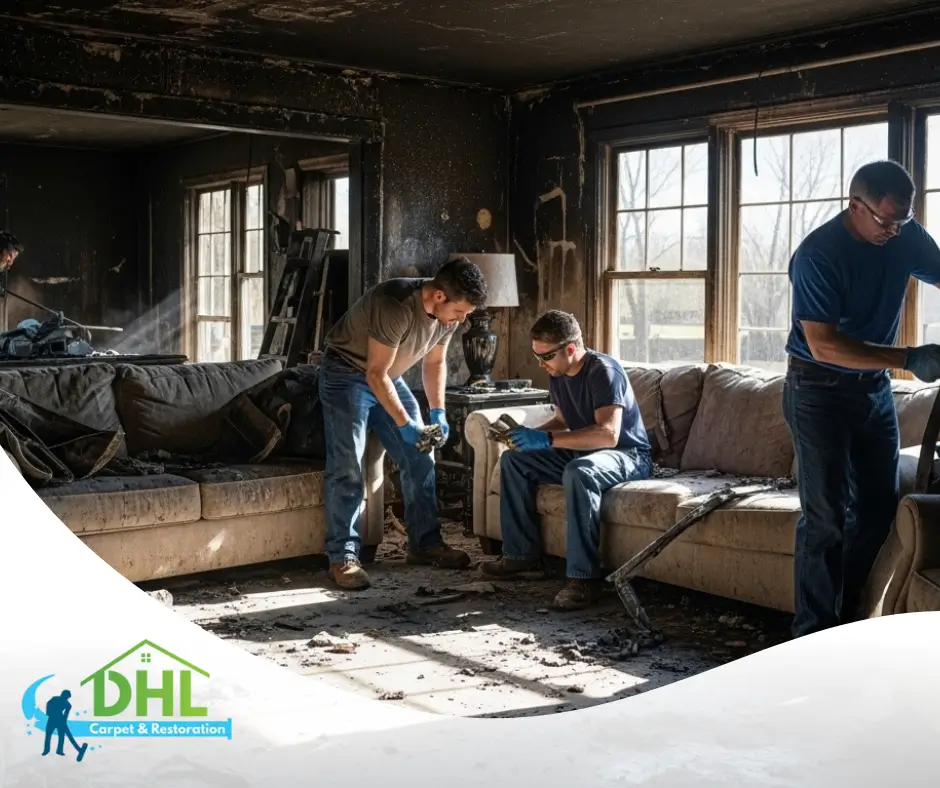Experiencing a fire is traumatic, and the aftermath can feel overwhelming. Once the flames are extinguished, the real work of recovery begins. That’s where Fire Damage Restoration comes in. This process not only repairs the damage but also ensures your home is safe, clean, and livable again. Understanding each step of the process can help you feel more confident during recovery and prepared for what’s ahead.
Step 1: Emergency Response and Inspection
After a fire, time is of the essence. The first step in the fire damage restoration process is a prompt response and thorough inspection. Restoration professionals assess the extent of fire, smoke, soot, and water damage. This evaluation helps determine the necessary steps for cleanup, safety measures, and restoration planning. Immediate action minimizes additional damage and begins the path to recovery.
Step 2: Securing the Property
To protect the property from further harm or unauthorized entry, damaged areas may be boarded up or tarped. Roofs, windows, and doors are common access points that require sealing. This step ensures safety, prevents weather intrusion, and provides a secure environment for the next phase of Fire Damage Restoration.
Step 3: Water Removal and Drying
Water used to extinguish the flames often causes secondary damage. Wet drywall, flooring, and insulation need urgent attention. Industrial-grade pumps and dehumidifiers are used for water extraction and structural drying. Removing moisture quickly helps prevent mold growth and protects the building’s integrity. This step is crucial in combined fire and water damage restoration.
Step 4: Smoke and Soot Removal
Once the property is dry, the next focus is removing smoke residue and soot. These particles cling to surfaces like walls, ceilings, and furniture and can cause long-term odors and staining. Professional smoke damage cleaning involves specialized equipment to clean and neutralize these contaminants. It also helps restore air quality and reduce lingering odors in the home.
Step 5: Deep Cleaning and Sanitization
All affected areas are thoroughly cleaned and disinfected to eliminate harmful bacteria and restore a livable environment. This includes cleaning of flooring, upholstery, walls, and other surfaces that may have absorbed smoke or chemicals. Odor neutralizers and air purifiers are often used to restore freshness. This step ensures your space is both visually clean and healthy for habitation.
Step 6: Structural Repairs and Restoration
Once the cleanup is complete, the reconstruction phase begins. Damaged drywall, insulation, flooring, and roofing may need to be repaired or replaced. Fire damage restoration services prioritize rebuilding with safety and durability in mind—restoring your home not just to its original condition, but often improving its resilience against future disasters.
Step 7: Final Inspection and Walkthrough
The final step is a comprehensive inspection to ensure every aspect of the restoration has been properly addressed. Professionals will confirm that the structure is safe, clean, and functional. This walkthrough offers reassurance that your home is ready to be reoccupied and that all fire-related hazards have been resolved through expert Fire Damage Restoration.
Final Thoughts
Recovering from a fire is a journey, but with the right support and process, your home can be fully restored. From emergency response and water extraction to smoke removal and structural repair, each step in the fire restoration process plays a vital role in restoring safety and comfort. Understanding what to expect brings clarity to an otherwise stressful time—and ensures that your recovery is handled with care and expertise.

